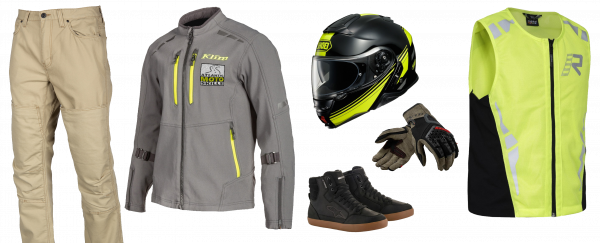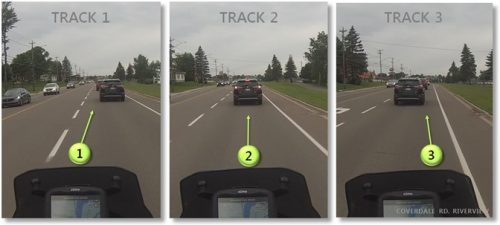So… you have had your Learner’s License for over 12 months and you are about to take your road test with Service New Brunswick. What should you know before your ride?
First off, you are responsible to know everything. (!) This seems like a stretch, but the examiner could test you on virtually everything that is in the handbook. It would be a good idea to read the entire handbook before testing. At a minimum, we would suggest re-reading “Section 8” of the handbook before you begin practicing for your ride. Click below.
If you have the small motorcycle license (learner’s endorsement “H” or full endorsement “D”), do not ride a motorcycle with over 550ccs to SNB for the test. Have a licensed rider, with a learners endorsement “I” or full endorsement “A” take it for you. Or you could trailer it.
To start, he or she may ask about pre-ride safety checks. Before riding, the examiner will have a look at your machine and ask questions about its road worthiness. We do not have annual inspections here in New Brunswick. As a result, they tend to be picky in this area. So, remember our “T-CLOCS?” Remember what this stands for? Section 8.4 in your handbook suggests a “Daily Safety Inspection” Apply this to your machine before bringing it to the test.
They may ask about riding gear. Know your helmet certifications and wear the proper gear. Putting what is legal and what is not aside, the impression you make with your gear will emphasis the level of safety you intend to ride with. Make an impression. Examiners have some level of responsibility for your safety. They really do not want to pass a rider, then see this rider involved in a major incident. I do not think it would take much to fail you if the examiner thought you were generally unsafe. It is our understanding that they ask you to wear a provided safety vest during the road test. Why not show up with your own Hi-Vis motorcycle safety vest?

The driving test includes the installation of a communication device within your helmet. Having a full faced helmet will assist you in hearing voice instructions. They will be following you in a car taking notes. They will give you ample time to complete each turn. The following are some of the things they may be looking for on this ride:
Motorcycle Familiarity
You should know the motorcycle. They may ask about the starting procedure, so know how to FINEC the bike. You might have to look that up again. (Section 8.5 of the handbook) It would be best to have the bike warmed up beforehand. You really do not want to be messing with a choke to get you bike to idle properly during the ride.
Control
Eye Control, Clutch Control, Throttle Control and of course, Braking Control. A good shoulder check and the proper application of the clutch and throttle will be monitored at take off. Examiners will know to watch for where the rider is looking, so look where you want to go. Riding on 2 wheels requires good eye control, so remember your training. When shifting, they will be looking for the obvious lurching of the motorcycle that is associated with poor shifting, both up and down. At braking, they will be looking for the smooth application of both brakes. Most examiners are familiar with our program, as well as others courses who overly emphasis shoulder checks, so a shoulder check as your left foot goes down at stopping will be noted.
Lane Positioning
One of our biggest advantages is the motorcyclist’s ability to position ourselves anywhere within the lane. There are positions for “Blocking” vehicles traveling behind. There are positions to enhance “Seeing” and “Being Seen“ for vehicle in front of us. There are also times were creating space or “Buffer Zones” to oncoming hazards such as blind spots are called for. You should keep all this in mind as you ride for your exam. As the handbook suggests, there is no lane position that is appropriate for all occasions. Each position will have some sort of compromise. So, it is up to the rider to make the proper decisions. They likely will talk to you about this afterwards at debrief. Following distance is also important, especially coming to a stop and leaving space at an intersection. Another good rule of thumb is to move to a position within the lane in the direction that the examiner asks you to turn as you approach this turn, at about the time you apply the turn signal. This leads us to the reminder to cancel this turn signal after you have turned. They will be watching. It goes without saying that the examiner’s car will have a speedometer. Exceeding the speed limit would not go over well during your exam.

There also might be a situation where the examiner asks you to come to a complete stop and park on a hill facing upward. They will be looking for you to apply your turn signal before pulling over, stop, shoulder check, then park with the front of the bike angled slightly outward onto the road, with your rear tire backing into and touching the curb. Practice this a few times before the test.
Relax
This is not the end of the road if you fail this test. Take notes, practice, then return once again to pass. Pay attention to all feedback from the examiner. They will make every effort to find fault in your ride. Understand that this is just the examiner doing his or her job. Take it all in. If required, come back and “ace it”.
One More Hint
Remember that the engine displacement of the motorcycle you bring to the test will dictate the license you achieve. Motorcycles with less than 550ccs will be issued the small “D” motorcycle license. Motorcycles with over 550ccs will be given the big “A” motorcycle license. Large size motorcycles take a bit more effort and control to master, particularly at the slow speeds in which you will be tested. We are disappointed that these longstanding classifications seem to “force” new riders who would otherwise start on smaller motorcycles, onto larger motorcycles in an effort to take one test. Despite the hassle and extra effort of having to re-test with SNB to move from the small to the big motorcycle license, we highly recommend you take this step as a new rider. Today’s motorcycles of less than 550ccs provide significantly more in terms of highway comfort and performance than motorcycles did when the two license classifications were implemented by the province.
Keep up the positive attitude and keep that head on a swivel out in traffic. On behalf of the crew at Atlantic Moto Skills, GOOD LUCK!